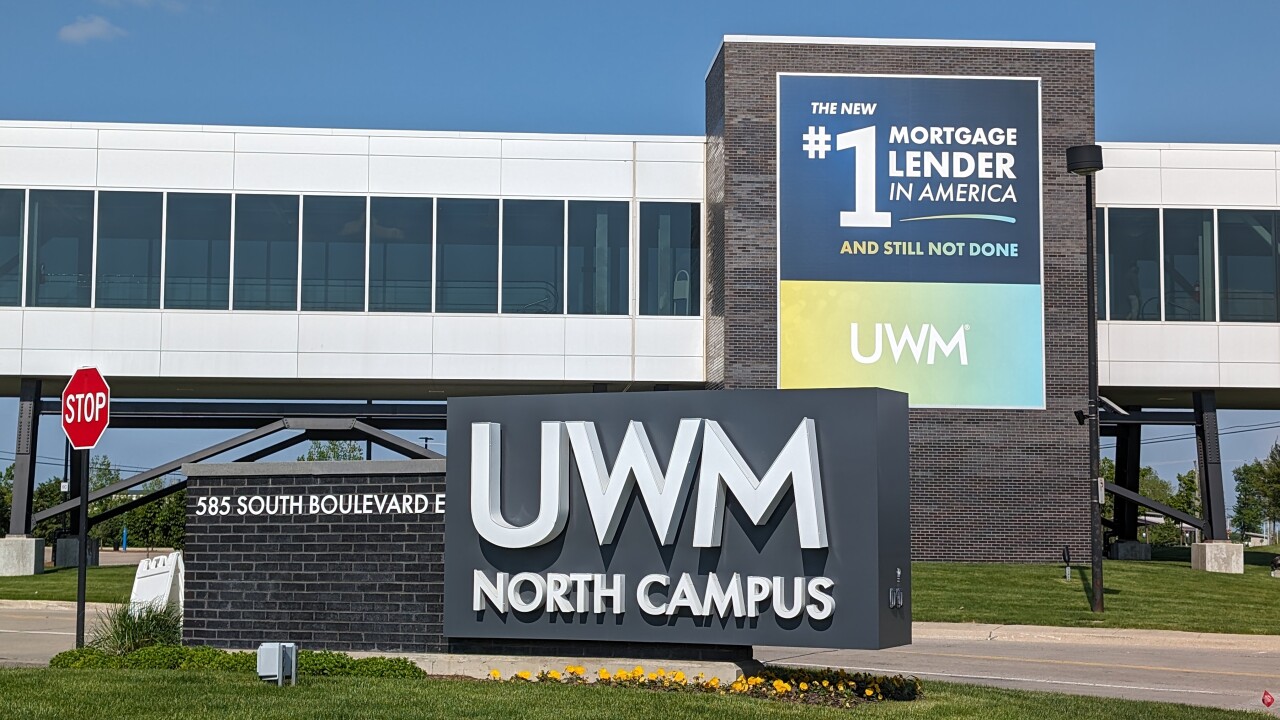High-balance "jumbo" housing loans above government agency limits appear increasingly likely to be the first part of the nonagency secondary mortgage market to make a comeback.
"There definitely has to be something that's going to break loose on the jumbo side," said Guy Taylor, chief executive officer of Equi-Trax Asset Solutions LP, Santa Barbara, Calif., a company that provides loan valuations for nonagency secondary mortgage market participants.
The huge loans above the government-supported agency limits currently set at $417,000 (or up to $729,000 in certain high-cost areas) are attractive to banks, according to Tom Millon, president and chief executive officer of the Ponte Vedra Beach, Fla.-based Capital Markets Cooperative.But in the current market environment, with private label securitization largely absent, balance sheet capacity for these loans has fallen short of demand. Recently jumbo rates have been as much as 2% higher than agency rates, and that is a concern when in the past they might have been only, for example, half a percent higher, according to Mr. Taylor.
The limited secondary market options in the nonagency jumbo market today largely revolve around routing the loans to bank portfolios that want to own them.
Jumbo whole loan participations are another option and could be a "baby step" back toward securitization, said Mr. Millon, whose group aims to help depositories tackle secondary mortgage market challenges. They don't involve actual securitization in terms of pooling loans in an off-balance-sheet trust and divvying up their cash flows into officially rated tranches, but they do involve dividing up participations in an aggregated group of loans sold into a platform entity. The way these participations are divvied up is somewhat similar to senior-subordinate structures in the securitized market in that the senior participations are protected by others that are designated to absorb losses before the senior participations do.
"It's old school," he said. "It's the way things were done way back before the securities market existed for this sort of thing."
Whole loan participation efforts today in the jumbo market have been "slow going" and have not been a widespread practice, Mr. Millon said. But he said CMC is "cautiously optimistic" about them. "Banks are interested, and I would not have said that six months ago," he said.
Other means through which the unmet demand for liquidity in the jumbo market might be met could include extending government involvement to higher loan balances, said David Adamo, chief executive officer of Luxury Mortgage, Stamford, Conn. However, the Obama administration has shown reluctance to get involved in supporting housing loans for higher income individuals in at least one instance. Giving private equity firms more ability to participate and invest in the banking sector by loosening restrictions in this sector might also bring more capital back to jumbos, Mr. Adamo said.
Another potential way to help restore jumbo financing could be more use of European-style covered bond programs in the United States by the banks, Mr. Adamo said. These offer what investors may perceive as an attractive combination of relatively strong credit and relatively high yield, as well as more "skin in the game," given they are kept on issuers' balance sheets as opposed to securitizations, he said. Investors have been so skittish in the wake of legacy nonagency mortgage-backed securities' extreme underperformance that securitizations have reached the point where they only funded about 2% of jumbo originations in 2008, Mr. Adamo noted. While participants in that market are working on reforms to bring securitization investors back he thinks covered bonds might bring investors back faster.
Because current balance-sheet capacity is not enough to meet jumbo demand, Mr. Millon thinks the on-balance-sheet solution of covered bonds would not be enough. But he does agree that having some "skin in the game" in terms of issuers holding at least the first loss piece from deals will probably be a part of the securitization's return. Washington officials have been thinking along the same lines.
Jumbos have historically been considered the least risky of nonagency products. Ideally they are sold to rich borrowers with strong credit and with the exception of their size; they are generally supposed to meet most traditional underwriting standards. They, like all nonagency products, were affected by the widespread, loose underwriting during the recent housing boom and the downturn it led to. Although they may not have suffered has badly as other sectors of the nonagency market where there were even more exceptions made to traditional underwriting, they have suffered. Jumbo residential mortgage-backed securities from the period preceding the recent downturn generally have seen several waves of performance deterioration and rating agency downgrades.
But more recently, now that underwriting is largely considered historically tight and there has been some consensus that deterioration in home values and the economy may be slowing in advance of a recovery, jumbo credit's attraction is growing, and some large banks have been showing more interest in the sector.





